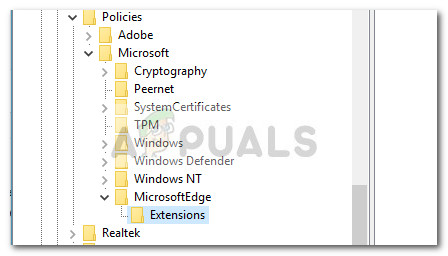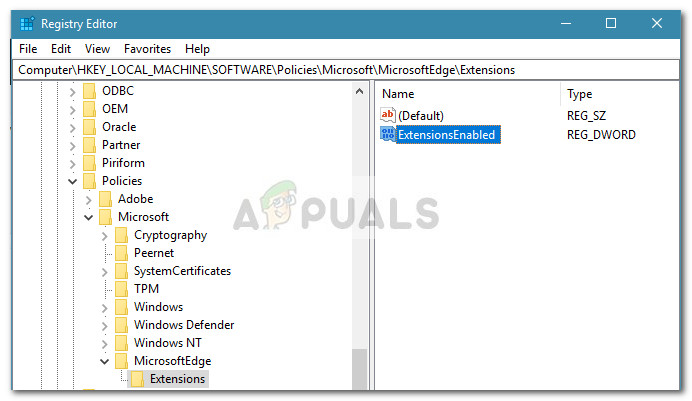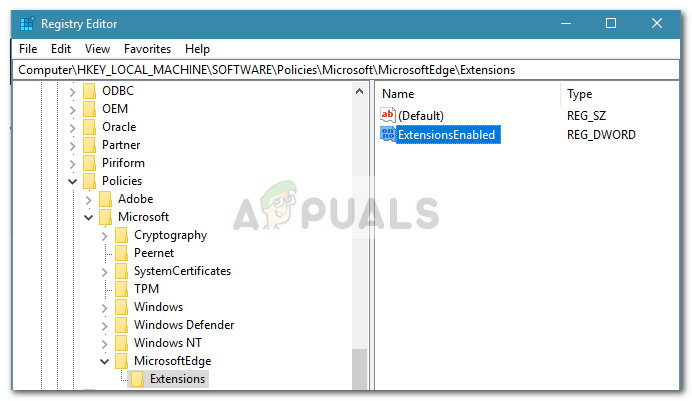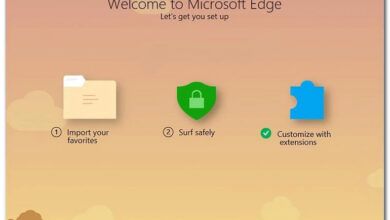How to Prevent the Installation of Edge Extensions
Microsoft has been fairly slow in implementing extensions for the Microsoft Edge browser. But even now that extensions became a fact for Microsoft Edge, their number is extremely small to what Chrome and Firefox have got going.
While some extensions can drastically improve the functionality of a browser, most Microsoft Edge extensions aren’t tested against huge user base. Also, there’s also the possibility to side-load extensions that are not present in the Microsoft Store. Because of this, I can understand why some system administrators might want to prevent other users from installing Microsoft Edge extensions.
Fortunately, there are ways to prevent other users from installing Microsoft Edge extensions. By doing this, you will disallow the extension function indefinitely or until you decide to revert the changes. Keep in mind that while these changes are enforced, all installed Microsoft Edge extensions will get disabled automatically and you (or another user) will not be able to install (or uninstall) extensions.
If you’re looking for a way to disable the extension feature on Microsoft Edge, follow one of the methods showcased below. Method 1 involves using the Local Group Policy editor to enforce the change while Method 3 uses Registry Editor to disallow the installation of Microsoft Edge extensions. Method 2 is still using Registry Editor, but the steps are automated using Command Prompt.
Keep in mind that all the methods featured in this article will help you reach the same end goal, so follow whichever method is applicable or seems more convenable to your situation.
Method 1: Blocking Edge Extensions with the Local Group Policy
The elegant approach out of the bunch is to use the Local Group Policy Editor to prevent other users from installing Microsoft Edge extensions in Windows 10.
Note: Keep in mind that while this method is arguably speedier than Method 2 or Method 3, it won’t be applicable in the Home edition of Windows 10. The Local Group Policy Editor is only usable with Windows 10 Pro or higher. If you don’t have Windows 10 Pro or above, move down directly to Method 2.
If you meet the criteria of using the Local Group Policy editor, follow the steps below to prevent users from installing Microsoft Edge extensions:
- Press Windows key + R to open up a Run command. Then, type “gpedit.msc” and hit Enter to open the Local Group Policy Editor. If prompted by the UAC window, hit Yes to grant it administrative privileges.

- In the Local Group Policy Editor, use the left-hand side pane to navigate to the following location Computer Configuration > Administrative Templates > Windows Components > Microsoft Edge. Once you get there, double-click on the Allow Extensions entry to bring up the Properties screen.

- Next, set the active toggle from Enabled to Disabled and hit the Apply button.
That’s it. You’ve successfully disabled Extensions altogether in Microsoft Edge. If you open the browser you’ll notice that any previously activated extension is now disabled and the ability to add new extensions is also disallowed.
If this method wasn’t applicable to your machine or you’re looking for a different approach to prevent other users from installing Microsoft Edge extensions, move down to Method 2 or Method 3.
Method 2: Disallowing Microsoft Edge Extensions via Command Prompt
If you want to avoid doing the Registry editing work yourself, you can accomplish the same registry setting that is featured in Method 3 by running a command in an elevated Command Prompt. Keep in mind that running the command in an elevated Command Prompt is imperative – otherwise, you won’t have the necessary permissions.
Here’s a quick guide to disabling the Microsoft Edge extensions via an elevated Command Prompt:
- Press Windows key + R to open up a Run command. Then, type “cmd” and hit Ctrl + Shift + Enter to open up an elevated Command Prompt. Next, hit Yes at the UAC (User Account Control) prompt.

- In the elevated Command Prompt, insert the following command and press Enter to disable the Microsoft Edge extensions:
reg add "HKEY_LOCAL_MACHINE\SOFTWARE\Policies\Microsoft\MicrosoftEdge\Extensions" /v ExtensionsEnabled /t REG_DWORD /d 0

That’s it. If you get the “operation completed successfully” message, the extensions on Microsoft Edge should now be disabled. You can test this by opening the Edge browser and see whether you’re still able to to use the access the Extension menu under Settings. If you aren’t, it means that this method has been successful.
If this method wasn’t applicable or the command was unsuccessful, move down to Method 3.
Method 3: Blocking Microsoft Edge Extensions via Registry Editor
Another approach is to Microsoft Edge extension installation by using Registry Editor. This will have the exact same effect and can be done on every Windows 10 version (not just on Windows 10 Pro).
As an additional precaution chore, consider backing up your registry before attempting to replicate the steps below.
Here’s a quick guide to disabling Microsoft Edge extensions via Registry Editor:
- Press Windows key + R to open up a Run box. Then, type “regedit” and hit Enter to open Registry Editor. If prompted by UAC (User Account Control), hit Yes at the prompt.

- In Registry Editor, use the left-hand side pane to navigate to the following location:
HKEY_LOCAL_MACHINE \ SOFTWARE \ Policies \ Microsoft - Right-click on the Microsoft folder and choose New > Key to create a new key named MicrosoftEdge.

- Next, right-click on the MicrosoftEdge and go to New > Key and name the new key Extensions.

- With the Extensions key selected, move to the right-hand pane right-click on a free space and choose New > DWORD (32-bit) Value and name it Extensions Enabled.

- Next, double-click on ExtensionsEnabled, set the Base to Hexadecimal and the value to 0.

That’s it. Your Microsoft Edge extensions are now blocked. Until you delete the ExtensionsEnabled value, you won’t be able to use or install any Microsoft Edge extensions. Even more, all the users accessing this computer will be unable to access the Extension option in Microsoft Edge settings.
Keep in mind that while you will still be able to install new Edge extensions from the Windows Store, they won’t load up in Microsoft Edge.





